Physical Address
304 North Cardinal St.
Dorchester Center, MA 02124
Physical Address
304 North Cardinal St.
Dorchester Center, MA 02124
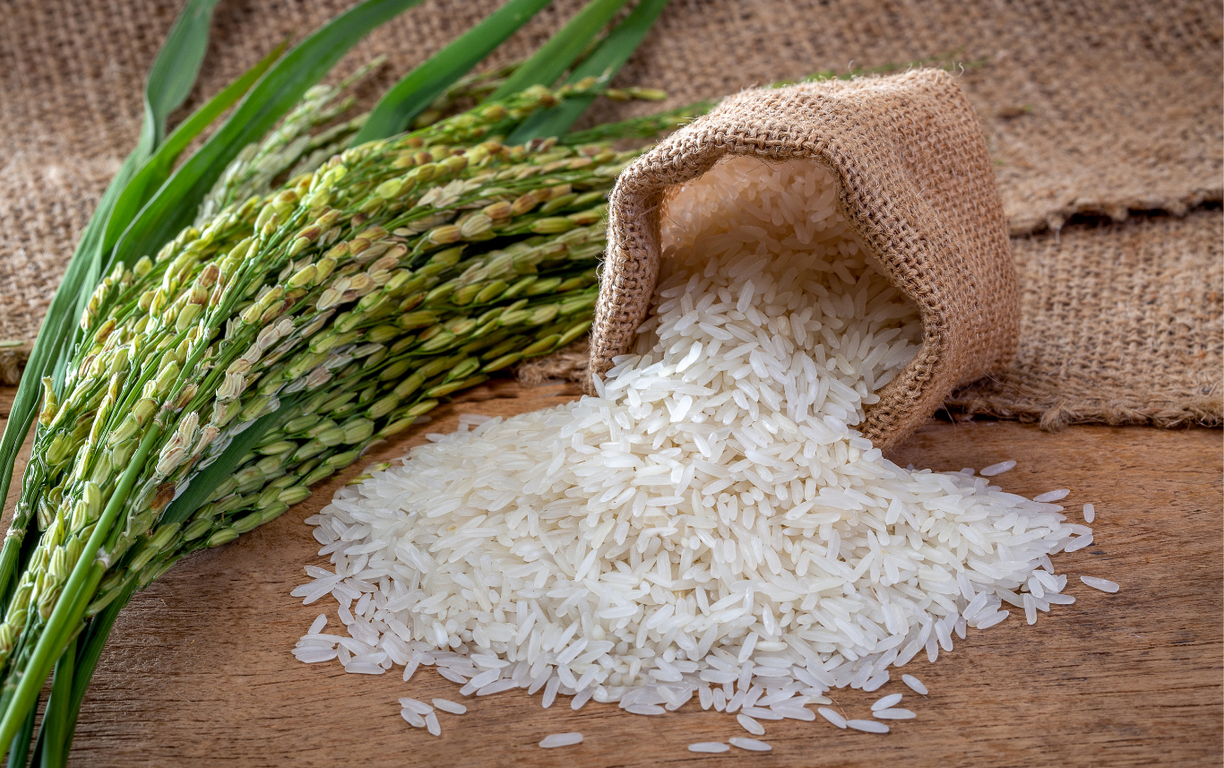
Cooking jasmine rice can feel intimidating, but with the right approach, you can achieve perfectly fluffy rice every time using a rice cooker. This method not only simplifies the process but also ensures consistent results. Whether you’re preparing a side dish for dinner or a base for a flavorful stir-fry, mastering this technique will elevate your meals.
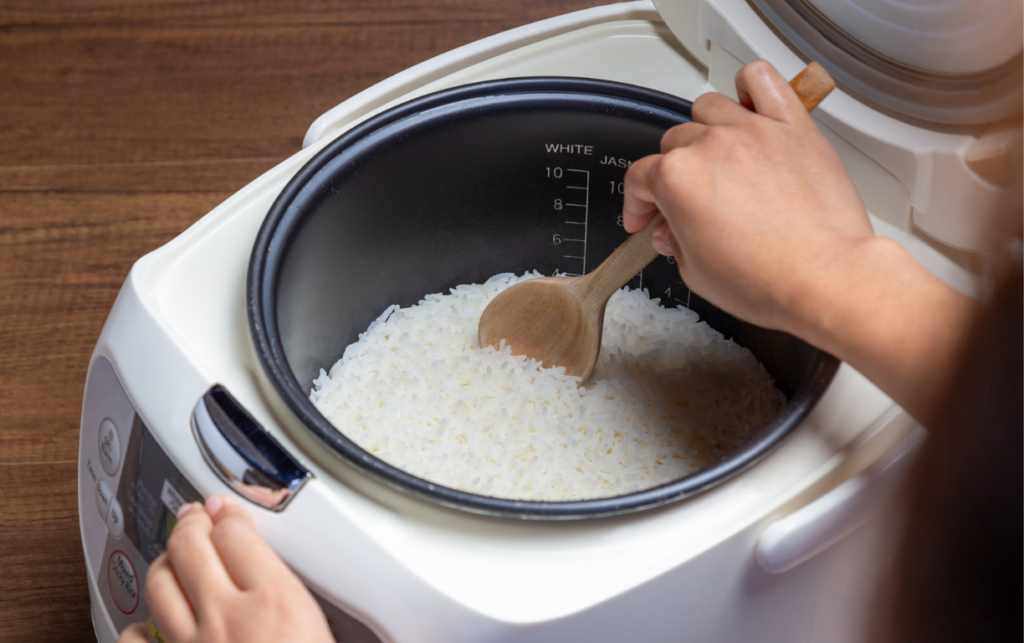
The key to great jasmine rice starts with choosing high-quality grains and preparing your rice cooker properly. A few simple steps, like rinsing the rice and understanding the correct water-to-rice ratio, make a big difference in the final texture. Once you’ve got that down, the cooking process becomes seamless, letting you focus on the rest of your meal.
By following the right methods, you can avoid common pitfalls and enjoy the delicious flavors of jasmine rice without hassle. Say goodbye to gummy or undercooked rice and welcome fluffy grains that complement any dish beautifully.
Selecting the perfect jasmine rice is essential for achieving fluffy results. Understanding the different varieties and how to store them properly can help you make the best choice for your cooking needs.
Jasmine rice comes in several varieties, each with unique qualities. The most common type is the white jasmine rice, known for its soft and sticky texture when cooked. This variety is often described as fragrant rice because of its delightful aroma, which enhances various dishes.
You may also encounter brown jasmine rice. This version retains its bran layer, making it more nutritious. It has a nuttier flavor and chewier texture but requires more water and time to cook than white rice.
Choosing between these options depends on your taste and dietary preferences. If you prefer a healthier option, go for brown jasmine rice. If you’re after the classic fluffy texture, stick with the white variety.
To keep your jasmine rice fresh, store it properly. Uncooked jasmine rice should be kept in a cool, dry place. Use an airtight container to protect it from moisture and pests.
If you buy rice in bulk, consider dividing it into smaller portions. This makes it easier to manage and ensures you take only what you need.
For cooked jasmine rice, refrigerate it in a sealed container. It can last up to four days. If you want to keep it longer, freezing is an excellent option. Just make sure it’s cooled down before placing it in the freezer. This prevents ice crystals from forming.
Before making fluffy jasmine rice, it’s important to prepare your rice cooker correctly. This step ensures even cooking and prevents sticking. You’ll need to focus on how to set up your appliance and determine the right water-to-rice ratio.
Start by cleaning your rice cooker pot. Use warm soapy water and a soft cloth to remove any residue from previous uses. This helps ensure that flavors do not mix and that the rice cooks evenly.
Next, place the pot securely into the rice cooker base. Make sure it’s aligned properly to avoid any cooking issues. If your rice cooker has a jasmine rice setting, select it, as this is designed for optimal cooking.
Consider applying a thin layer of oil to the pot. This can help prevent the rice from sticking during cooking. It’s a simple step that makes a big difference in texture.
For jasmine rice, the common ratio is 1:1, meaning one cup of rice to one cup of water. This ensures the rice cooks perfectly, becoming soft and fluffy.
Measure your jasmine rice using a standard measuring cup. After rinsing the rice under cold water to remove excess starch, add it to the pot. Pour the appropriate amount of water over the rinsed rice.
If you prefer softer rice, consider adding a little extra water—about a quarter cup more. Adjusting the water can change the texture to your liking. Always remember that proper measurement is key to achieving the best results.
To achieve fluffy jasmine rice, proper rinsing and soaking are essential steps. These processes help remove excess starch and enhance the rice’s flavor and texture.
Rinsing jasmine rice before cooking serves several important purposes. First, it removes surface starch, which can cause the rice to become sticky. Rinsing reduces clumping and promotes a fluffy texture.
Additionally, rinsing helps eliminate any dust or impurities that may remain from processing. This ensures your rice is clean and safe to eat.
To rinse, place your rice in a bowl and cover it with water. Swirl the rice gently, then drain the water. Repeat this process until the water runs clear. This simple step greatly improves the overall quality of your cooked rice.
Soaking jasmine rice can enhance its texture and flavor. Soaking helps the grains absorb water, leading to even cooking. This also accentuates the rice’s natural nutty flavor.
To soak, combine the rinsed rice with fresh water in a bowl. Allow it to soak for 15 to 30 minutes. This time allows the rice to hydrate properly.
After soaking, drain the water, and your rice is ready for cooking. This technique is especially helpful when using a rice cooker, as it allows for a consistent texture throughout the batch. Soaking jasmine rice can be a simple way to elevate your dishes significantly.
Cooking fluffy jasmine rice involves precise steps, including adding seasonings and managing cooking times. These elements can greatly influence the texture and flavor of your rice.
After washing your jasmine rice, it’s time to add flavor. You can enhance the taste by using broth instead of plain water. This small change can elevate the dish significantly.
Consider adding the following:
Mix these ingredients with the rinsed rice in your rice cooker before adding water. Use a 1:1 ratio of water to rice for perfect results.
The cooking time for jasmine rice in a rice cooker is generally straightforward. Set your cooker according to its specific functions. Most rice cookers have a “white rice” setting that works well for jasmine rice.
Typically, cooking takes about 10-15 minutes. The rice cooker will switch to keep warm mode once the rice is done. Resist the urge to lift the lid right away.
Let the rice sit covered for an additional 5-10 minutes. This resting time helps the grains firm up and become fluffier. If you follow these steps, you’ll enjoy perfectly cooked jasmine rice every time.
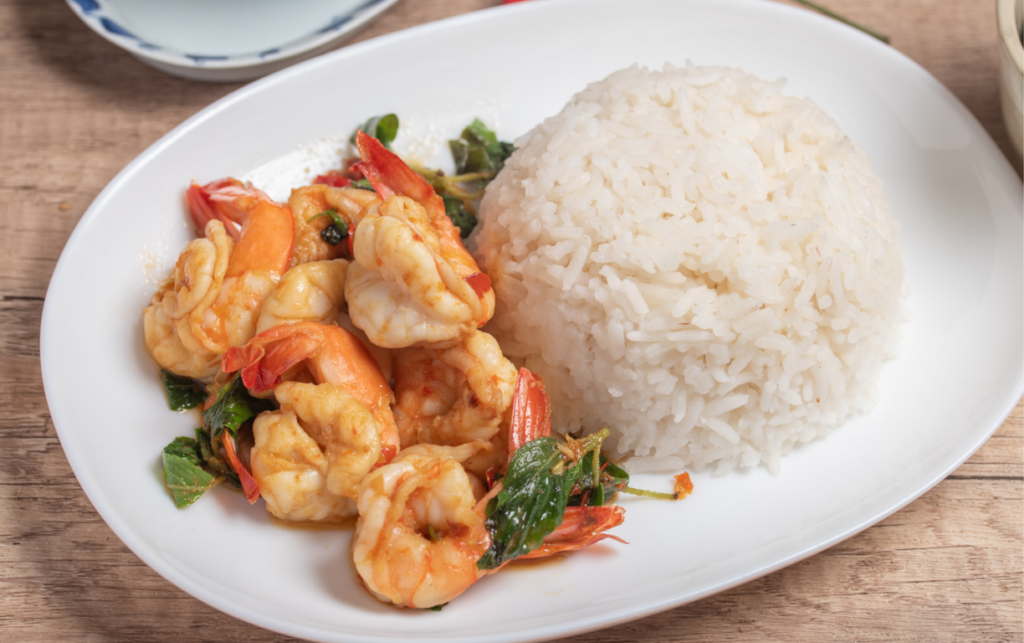
After cooking your jasmine rice, the next important steps are fluffing and serving it. Proper fluffing ensures your rice is light, fluffy, and not sticky, while serving carefully enhances its appeal.
To achieve the perfect jasmine rice texture, start by using a fork instead of a spoon. Gently lift and stir the rice to separate the grains without mashing them. This method helps release steam and air, giving your rice that light and fluffy quality.
Allow the rice to rest for about 5 to 10 minutes after cooking. This resting time helps it reach the ideal texture. Ensure you serve the rice warm to enjoy its fragrant aroma fully.
If there’s any excess moisture, leave the lid slightly open during this resting period. This keeps the rice from becoming too wet and maintains its perfect fluffiness.
Fluffy jasmine rice is versatile and complements many dishes. It pairs well with stir-fried vegetables, such as bok choy or snow peas. The rice acts as a great base that absorbs flavors.
Consider serving it alongside curries, like Thai red or green curry. The fragrant aroma of jasmine rice enhances the meal experience.
For a simple side, try it with grilled chicken or fish, seasoned with soy sauce and ginger.
Adding fresh herbs like cilantro can also brighten your dish. These pairings make your fluffy jasmine rice not just a side, but a delightful component of your meal.
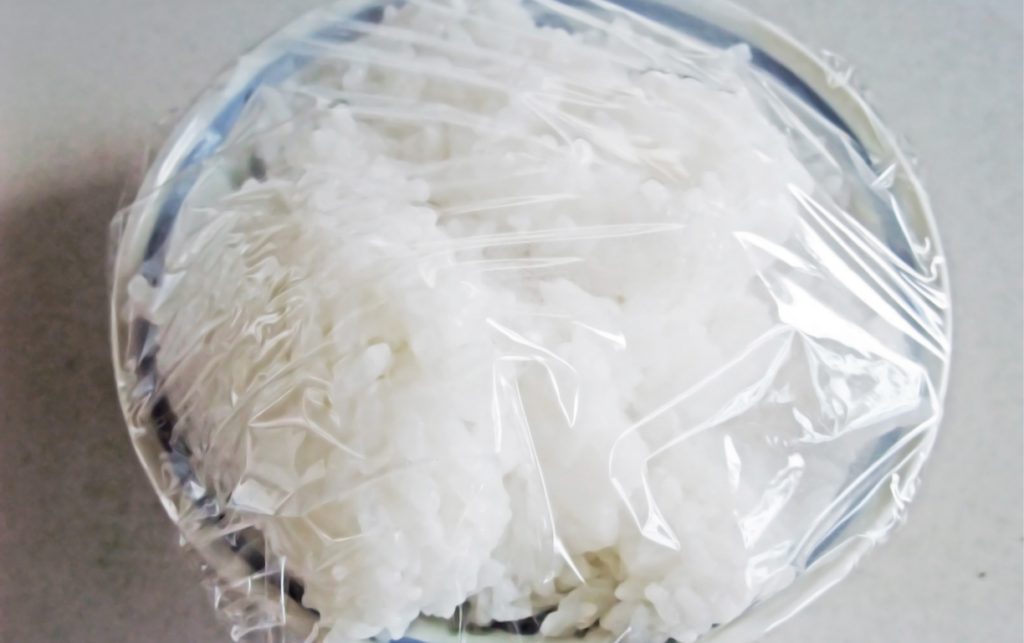
After cooking fluffy jasmine rice, it’s important to handle it properly to maintain its texture and flavor. You can store leftover rice safely and reheat it effectively for future meals.
To store leftover jasmine rice, first let it cool down to room temperature. This prevents condensation, which can make your rice soggy.
Once cooled, transfer the rice to an airtight container.
Make sure to separate the rice into portions that you can use later.
This not only saves time but also helps if you want to heat small amounts.
Refrigerate the container for up to 4-6 days. For longer storage, consider freezing cooked jasmine rice.
Use freezer-safe bags or containers, and label them with the date.
Frozen rice can last up to six months. When you need it, you can easily reheat portions as needed.
When you reheat jasmine rice, your goal is to maintain its fluffy texture. Start by taking the desired portion of rice from the fridge or freezer. If the rice was frozen, let it defrost overnight in the fridge.
For best results, use a microwave. Add a splash of water to the rice to create steam. Cover the bowl with a microwave-safe lid or plate. Heat on medium power for about 1-2 minutes, stirring halfway through.
You can also reheat rice on the stove. Add the rice to a saucepan with a little water and cover. Heat on low, stirring occasionally, until warmed through.
Avoid reheating jasmine rice multiple times, as this can affect its quality. Keep your reheated rice gluten-free and delicious with these simple techniques.
Sometimes, making fluffy jasmine rice can be a bit tricky. You might encounter problems like sticky rice or not enough moisture. This guide will help you resolve those issues easily.
Getting the right water-to-rice ratio is crucial. For jasmine rice, a common guideline is to use 1 cup of rice to 1.5 cups of water. If your rice turns out too dry, try adding a little more water next time.
On the other hand, if your rice is often too wet or mushy, reduce the amount of water slightly. A simple way to measure is to use a rice cooker; it usually has a water level indicator. Make sure to check your rice cooker’s instructions too, as different models might require slight adjustments.
Sticky rice can occur if you don’t rinse your rice properly. Always rinse jasmine rice under cold water until the water runs clear to remove excess starch. This helps prevent clumping and enhances fluffiness.
If your rice ends up too sticky despite rinsing, consider increasing the rinsing process. Reducing the water amount slightly can also help. If your rice is too dry, add a tablespoon of water, cover, and let it steam for a few minutes. This can restore moisture without cooking it further.
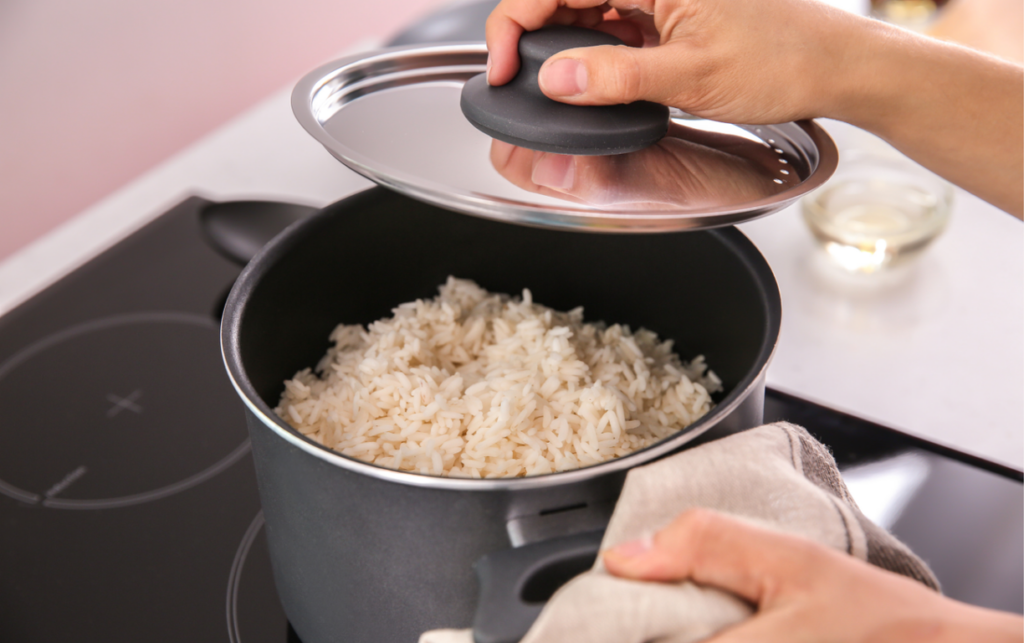
If you don’t have a rice cooker, you can still make perfect jasmine rice using other methods. The Instant Pot and stove are effective alternatives that yield fluffy results every time. Here’s how you can use these methods.
The Instant Pot is a popular kitchen tool that makes cooking rice easy. To prepare jasmine rice, start by rinsing your rice until the water runs clear. This removes excess starch and prevents the rice from being gummy.
Add the rinsed rice to the Instant Pot with water. You should use a 1:1 ratio of rice to water. Set the Instant Pot to high pressure and cook for 3 to 5 minutes. Remember to allow time for pressure to build and for natural release afterward.
Once done, fluff the rice with a fork. You can serve this rice with stir-fries or curries. The Instant Pot method is ideal for busy cooks who want quick, delicious meals.
Cooking jasmine rice on the stove is straightforward and effective. Start by rinsing your jasmine rice until the water is clear. This step helps achieve light and fluffy rice.
In a pot, combine the rinsed rice with water using a 1.5:1 water-to-rice ratio. For example, if you use 1 cup of rice, add 1.5 cups of water. Bring the water to a boil, then reduce it to a simmer.
Cover the pot with a tight-fitting lid and let it cook for about 15 minutes. Afterward, remove the pot from heat and let it sit for another 5 minutes. Finally, fluff the rice with a fork before serving. This stovetop method works well for sushi rice or as a base for various dishes.
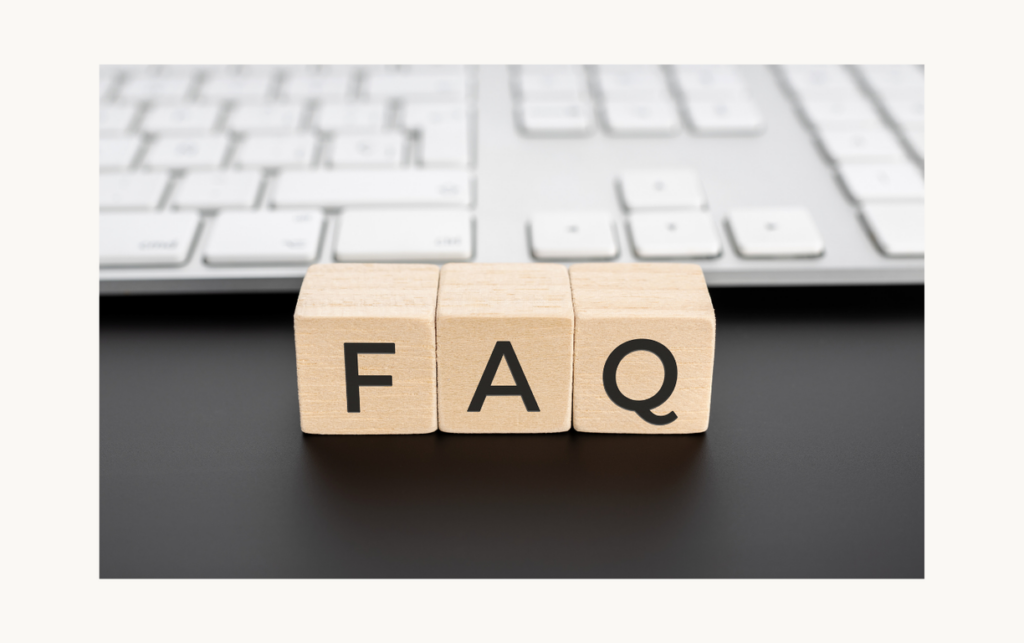
You may have questions about cooking jasmine rice in a rice cooker. Here are answers to common concerns that can help you achieve fluffy and delicious results.
The recommended water to jasmine rice ratio is typically 1:1.5. This means for every cup of jasmine rice, you should use 1.5 cups of water. However, some cooks prefer a 1:1 ratio for even fluffier rice.
You should cook jasmine rice in a rice cooker for about 10 to 15 minutes, depending on your specific model. After the cooking cycle is complete, let the rice sit for another 10 minutes with the lid closed. This helps the rice steam and become fluffier.
Yes, you can use chicken broth instead of water for added flavor. Just ensure you maintain the same water-to-rice ratio. If the broth is salted, you may want to reduce any additional salt used in the cooking process.
To prevent sticking and mushiness, always rinse your jasmine rice thoroughly before cooking. Using the correct water-to-rice ratio and not overcooking the rice also helps maintain its texture.
If your jasmine rice isn’t fluffy, it may be due to using too much water or not rinsing the rice properly. Ensure you are following the recommended water ratio and rinsing to remove excess starch, which can lead to a gummy texture.